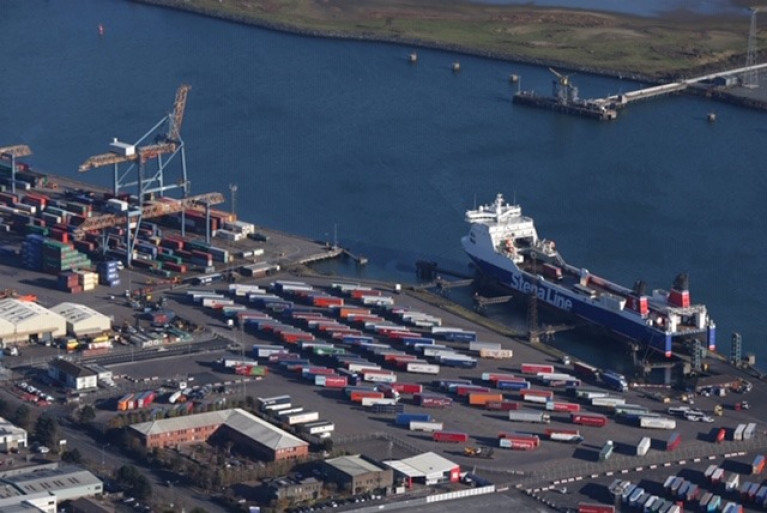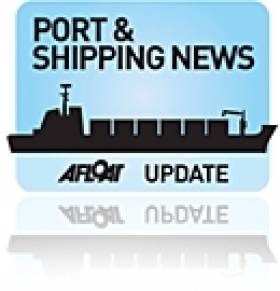Displaying items by tag: Exports
Exports from Britain Increasingly Ship through the North
As Independent.ie writes, Britain is now far less important to Irish importers and exporters than it was before Brexit, figures show.
A report by the Economic and Social Research Institute has found that goods from England, Scotland and Wales now make up just 7.2pc of total Irish imports, down from 23.2pc in 2015, and 6.3pc of total Irish exports, down from 10.9pc in 2015.
The shift is due to Brexit, not Covid, the ESRI said.
Trade patterns on the island of Ireland have also shifted dramatically since the 2016 Brexit referendum.
Between 2015 and February this year, Northern Ireland’s share of Ireland’s UK imports has increased more than sixfold, while it has almost doubled its share of total Irish exports to the wider UK.
Click here for more on the story.
‘Fragile’ Market for Irish Seafood at Home and Abroad in Pandemic-Hit 2020 - DAFM Report
The Irish fisheries market both at home and abroad experienced an “extremely fragile” situation in the wake of the COVID-19 pandemic, according to the latest Annual Review and Outlook for Agriculture, Food and the Marine.
Published today (Wednesday 10 November) by the Department of Agriculture, Food and the Marine, the report details that exports from a sector that employs 16,400 people “directly and downstream” totalled €531 million in 2020 — down nearly 8% on 2019.
“The sector has been severely impacted by COVID-19 which has affected the performance of all species across the sector, particularly within the shellfish category which suffered a 30% reduction in export values,” it said.
France — which is Ireland’s largest export market for seafood, accounting for 11% of exports in 2020 — was “extremely challenging for Irish exporters” last year, with values declining by almost one fifth, or €118 million — driven largely by pandemic-enforced closures across the hospitality sector. A similar depression was experienced across the other main EU markets of Spain, Italy, Germany and Poland.
Exports to Asia also “suffered major declines” last year, with exports of €46 million representing a 48% decline on 2019. Exports to China in particular fell by whopping 70%, and a rise in logistical costs also had a “negative impact” on returns.
It was a bad year for the Irish oyster sector, too, with export value (-30%) and volume (-29%) both down significantly. The only growth was experienced in exports to South Korea and Italy; however these markets “are relatively small”, the report notes.
Salmon exports told a brighter story in 2020, with values rising by 14% with an 11% growth in volume. Poland has now overtaken France as the largest market for Irish salmon, with exports almost doubling, while exports to Germany rose by 10%.
Regarding post-Brexit changes to Ireland’s quota share under the Common Fisheries Policy, the report outlines how quota balancing is being implemented on a phased basis. Pelagic stocks were quota balanced for the years 2018 and 2019, while balancing for the five key demersal (whitefish) stocks was implemented in 2020.
“At this point, it is not clear how the United Kingdom’s withdrawal from the EU will be effectively managed from a fisheries perspective,” the report warns.
Despite the difficulties experienced during the first year of the COVID-19 pandemic, however, Ireland’s fishing industry “has continued to keep food in our shops and on our tables during this extraordinary time”.
The report adds: “This has highlighted the vital role that the fishing industry plays in the food chain. This, in turn, underscores the importance of ensuring the sustainability of our fish stocks.”
Further details — including more detailed breakdowns of seafood exports by category, shellfish licensing and a briefing on the Clean Ocean Initiative — can be found in the Annual Review and Outlook for Agriculture, Food and the Marine which is available to download from Gov.ie HERE.
Exporters from Ireland selling into the key UK market may be weathering the disruption caused by the new Brexit border on the Irish Sea, even as imports from Britain are down sharply, new CSO figures suggest.
At €3bn, goods exports to Britain for the first three months of the year were down by only 3% from the same period in 2020, despite the disruptions to trade and truck movements at Irish Sea ports.
Exports of food and live animals to Britain accounted for part of the decline – sales across the Irish Sea fell to €648m from €871m in the same period in 2020.
Food and live animal export sales were also down to EU countries, to €855m from €914m a year earlier.
However, the CSO figures show a sharp fall, by €2bn, across a wide range of imports from Britain, down by €2bn to €2.2bn in the first quarter.
Further reading from the Irish Examiner
Irish Seafood To Make An Impression At Major Trade Expo In China
Later this week Andrew Doyle, Minister of State at the Department of Agriculture, Food and the Marine, will lead Irish participation in Qingdao, China at the Seafood Expo, one of the largest seafood fairs in the world.
Irish seafood exports to China have grown rapidly to over €28 million last year, and there is potential for further growth. Up to 12 Irish seafood companies will be represented on the Origin Green Ireland stand.
This trade visit follows technical meetings to discuss meat market access held by DAFM officials in Beijing on Friday, and the Trade Mission to Indonesia and Malaysia led by Marine Minister Michael Creed, who also addressed the Our Ocean Conference in Bali last Monday.
“Market development, including understanding, accessing and growing new markets, is a key theme of our shared Food Wise 2025 strategy, and an important response to the challenges posed by Brexit,” Minster Doyle said.
Earlier in the week the minister will attend the CIIE (Chinese Import and Export Expo) in Shanghai. This Chinese government-led expo, to be opened by President Xi Jinping, is intended to serve as a showcase for China’s commitment to international trade.
The Irish delegation will be led by Heather Humphreys, Minister for Business, Enterprise and Innovation and will feature a significant presence from Bord Bia and a total of 11 Irish meat and dairy companies.
#SeafoodExports - Food and Marine Minister Michael Creed and his Chinese counterpart have agreed an export certificate which will permit the resumption of live crab exports to the critically important Chinese market.
The Irish seafood sector has been extremely anxious to resolve a number of certification issues which have hampered the trade, and exports are expected to resume in the very near future, according to the Department of Agriculture, Food and the Marine (DAFM).
The agreement was one of a number of issues settled between Minister Creed and Zhi Shuping, China’s minister with responsibility for the Chinese Quarantine and Inspection Service, during their meeting in Dublin this week at which they signed a landmark protocol for seafood, beef and thoroughbred horse exports.
The meeting on Tuesday (18 April) was the second formal bilateral meeting of the two ministers and comes after Minister Creed’s discussions with Minister Zhi in Beijing last September.
Commenting on the meeting, Minister Creed said: “China is now such an important partner for Ireland on agri-food issues and is our third largest trading partner in this sector,” said Minister Creed on the meeting, adding that the protocol signing “marks the culmination of intensive political, technical and diplomatic engagement with the Chinese authorities.
“I look forward to moving forward with the next steps as quickly as possible”
Irish agri-food exports to China have increased from some €240 million in 2012 to €780 million in 2016, a three-fold increase. This makes China the third largest market for Ireland’s agri-food sector in value terms after the UK and US for last year.
Volumes Increase at Drogheda Port
In order to facilitate the recovery of the economy, ports with increased capacity will play a vital strategic role in expanding export-driven trade. Plans by the Drogheda Port Company to the development of a proposed new port at Bremore in north Co. Dublin, remain a key objective of the company, with a planning application currently in preparation.

































































